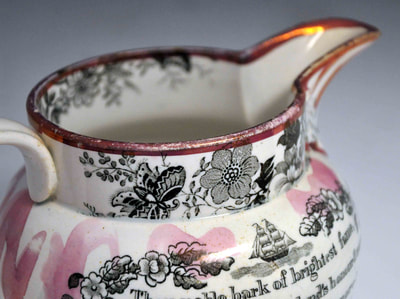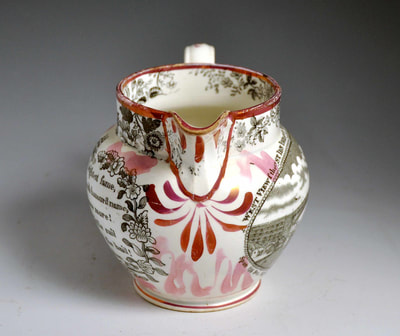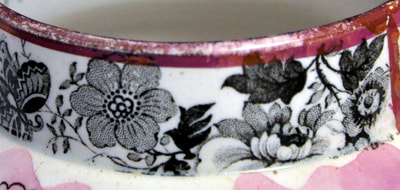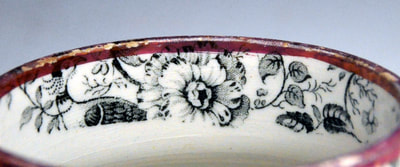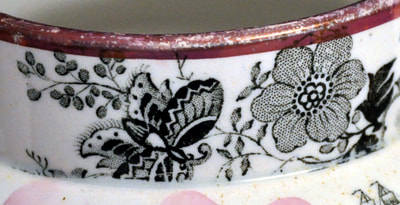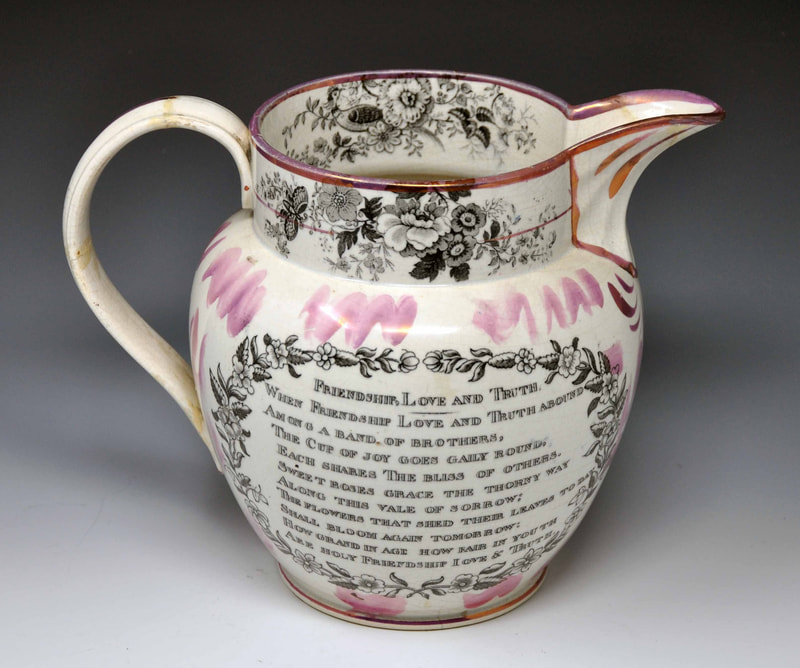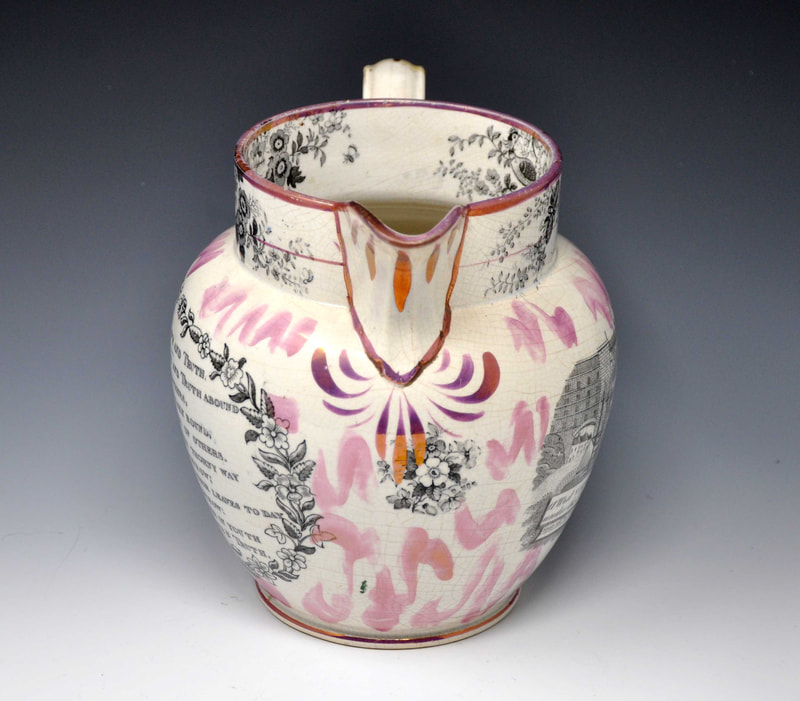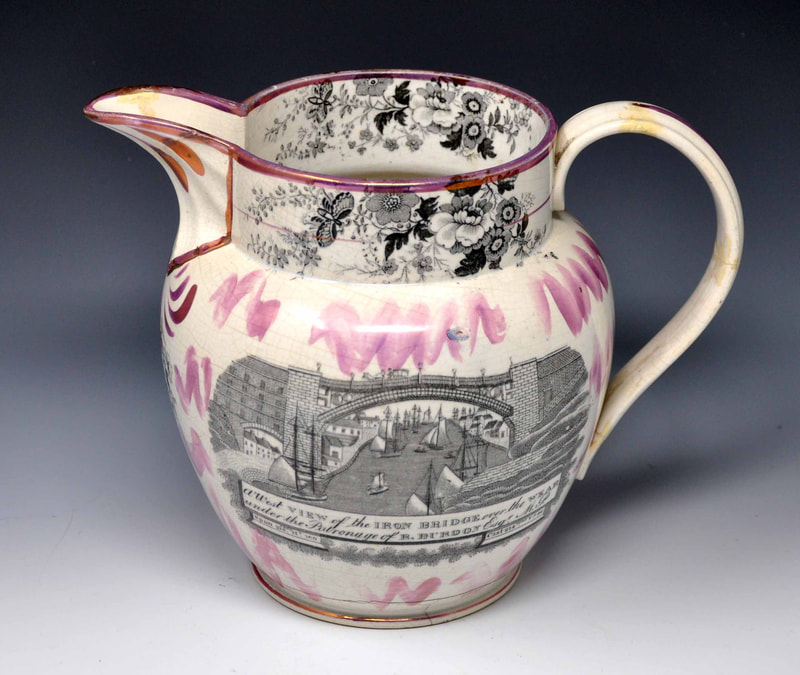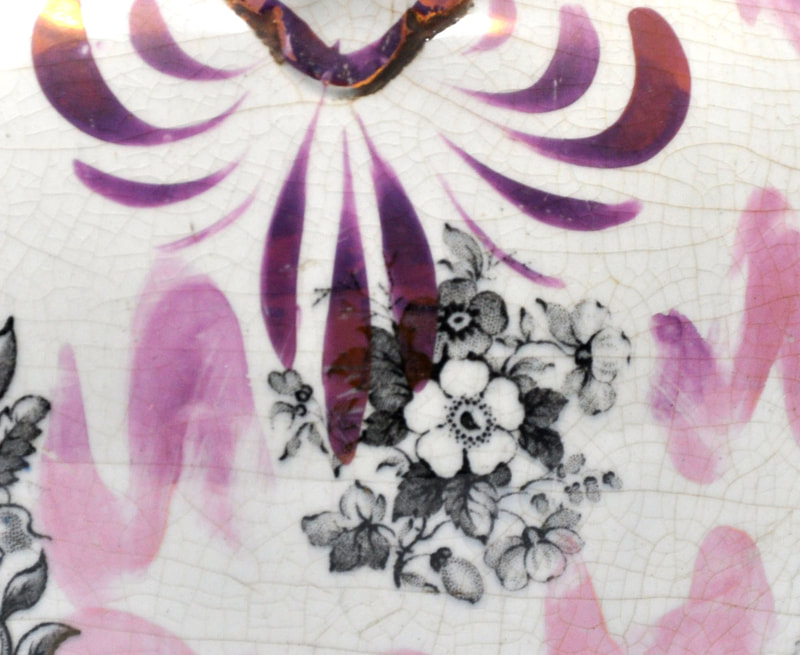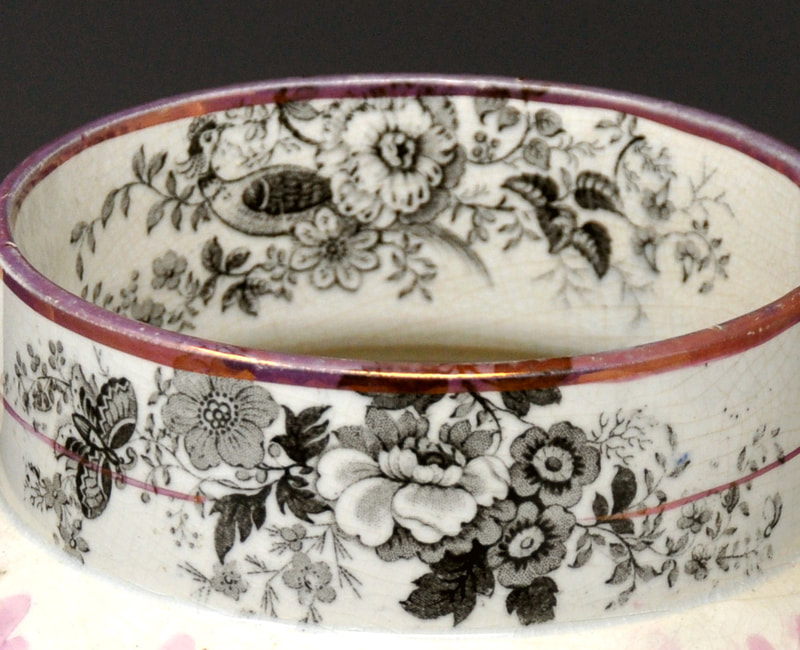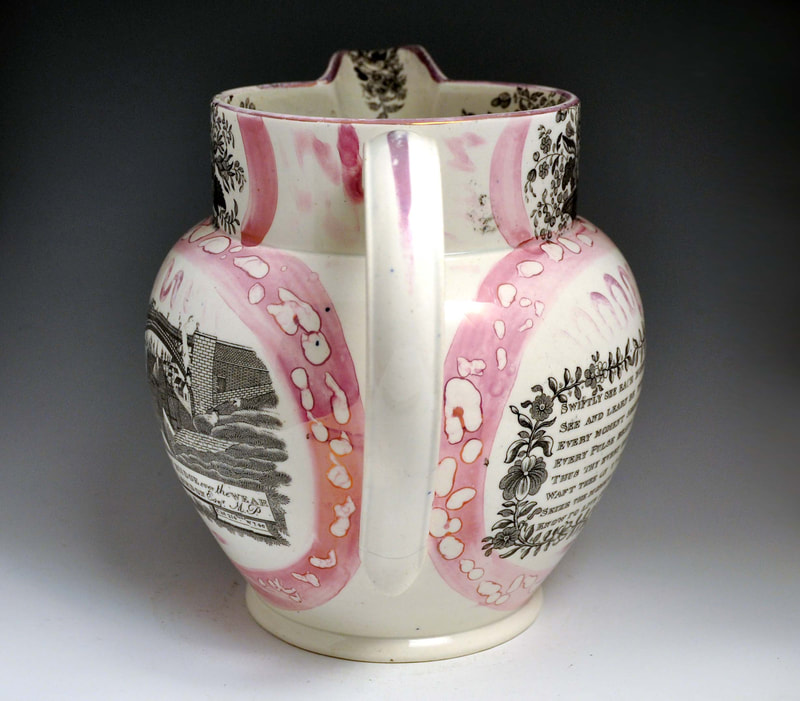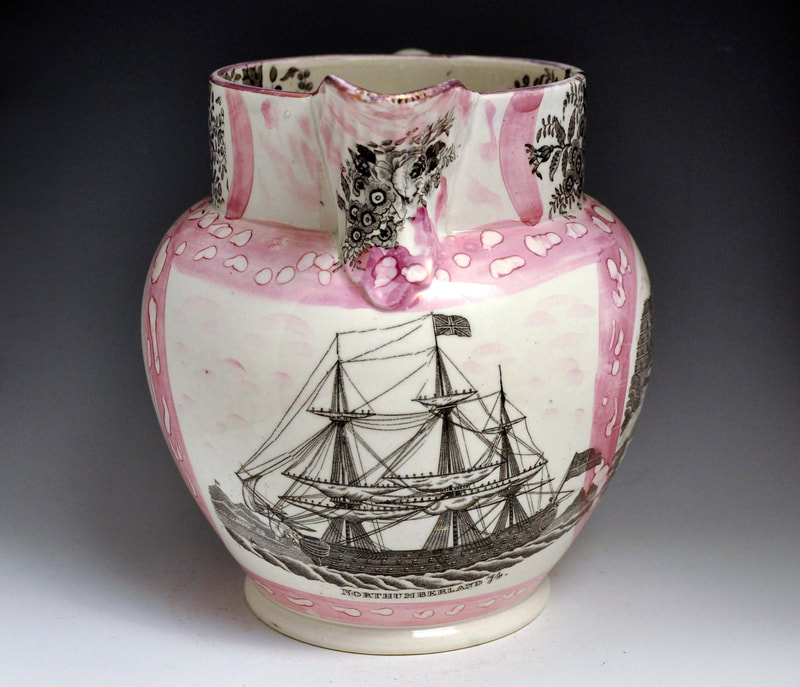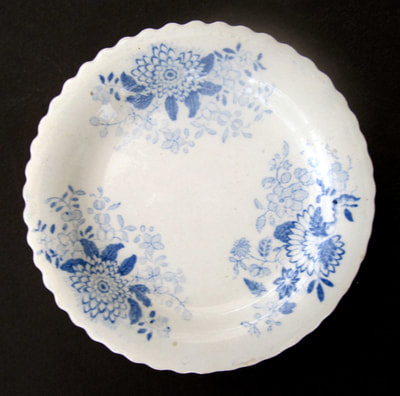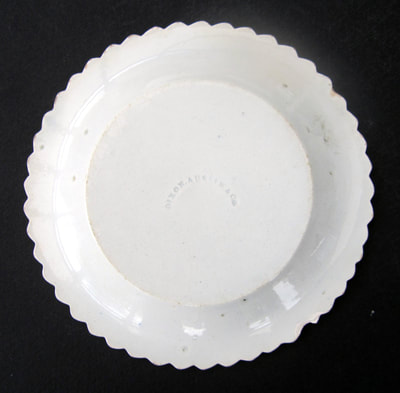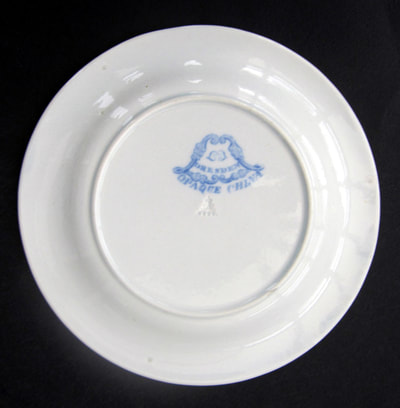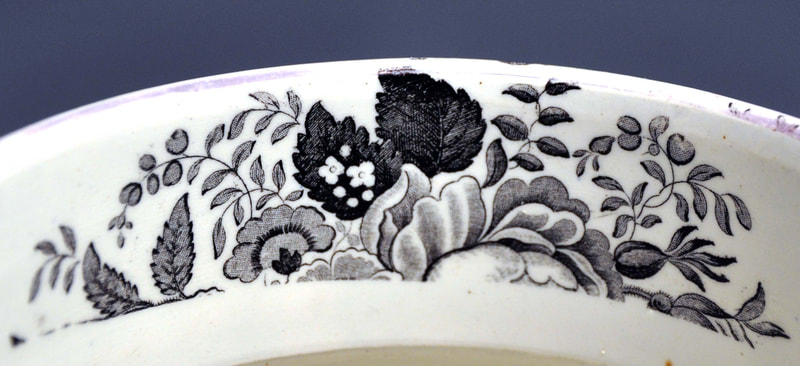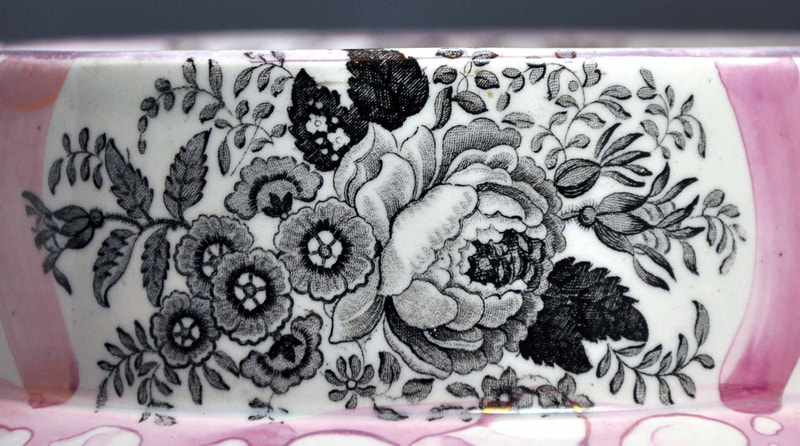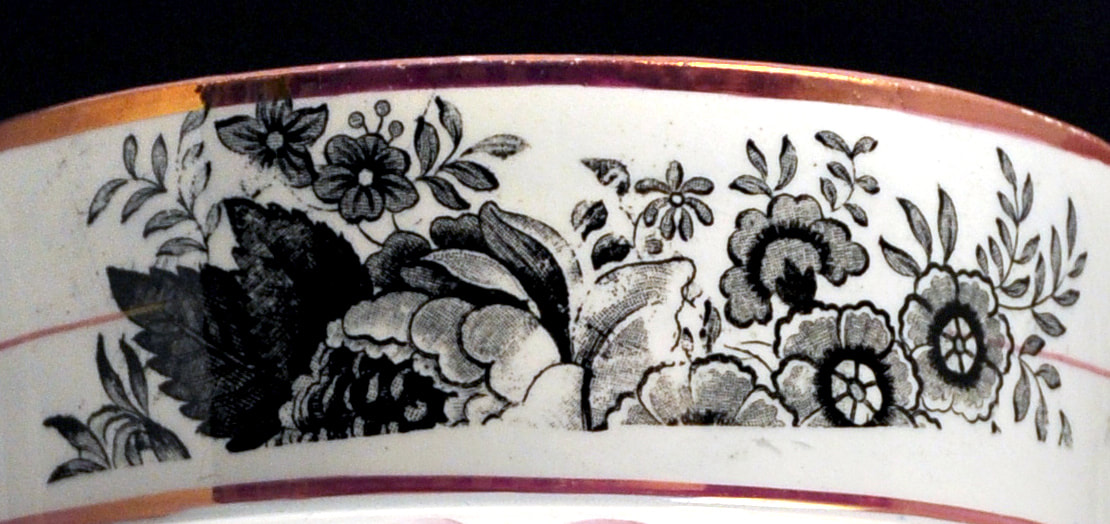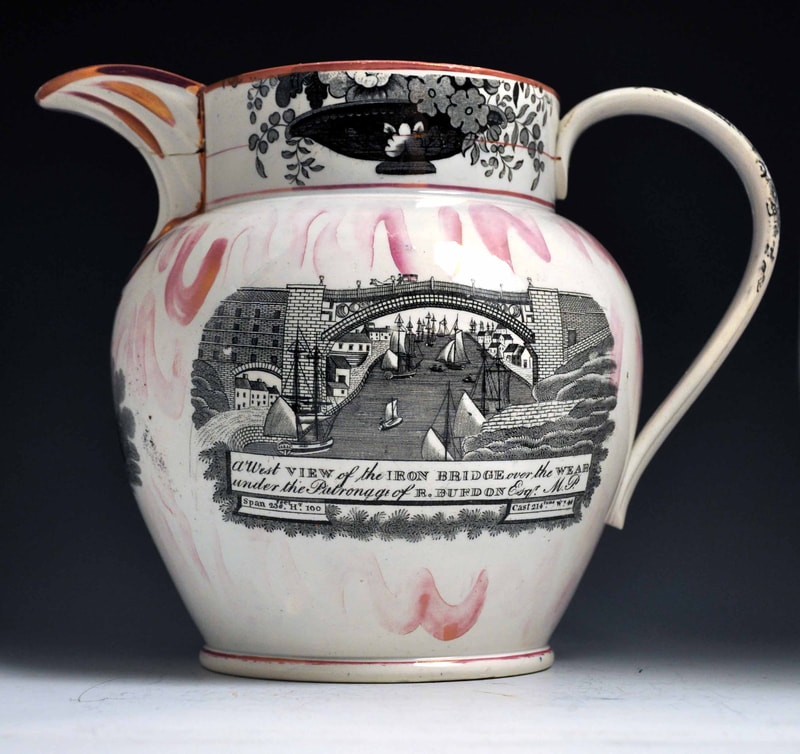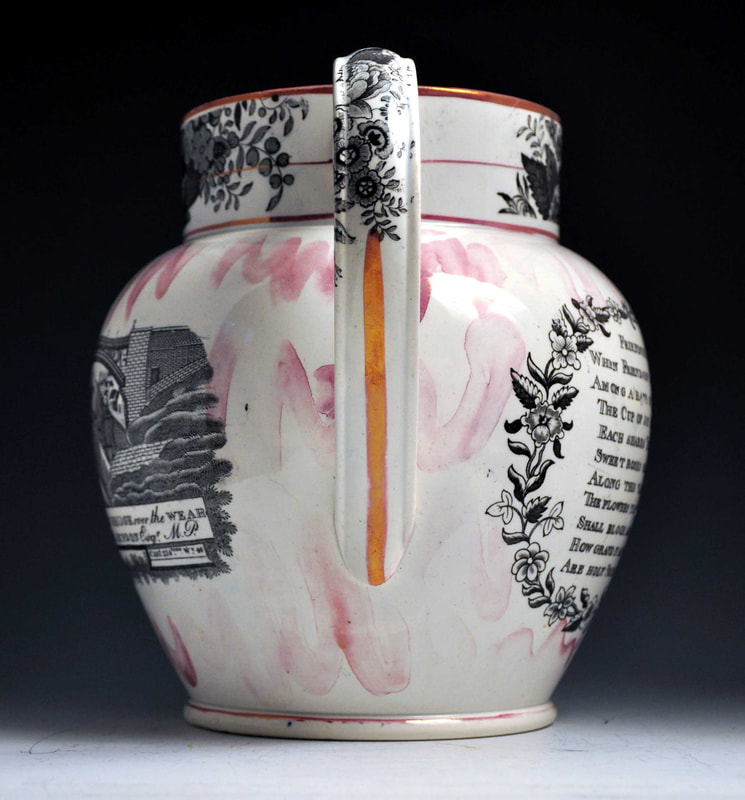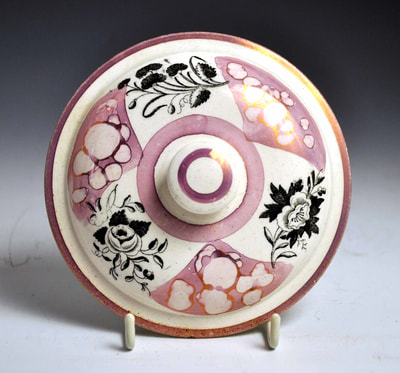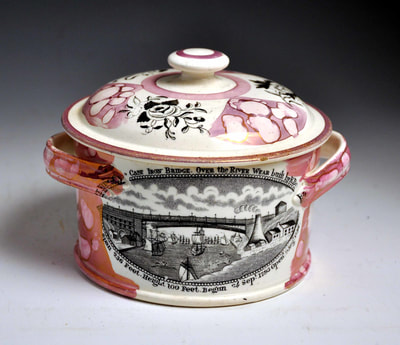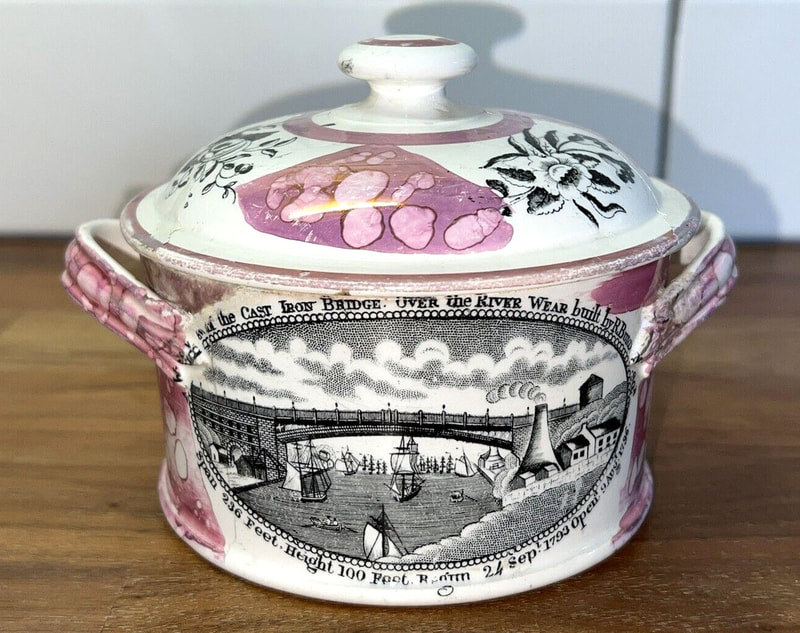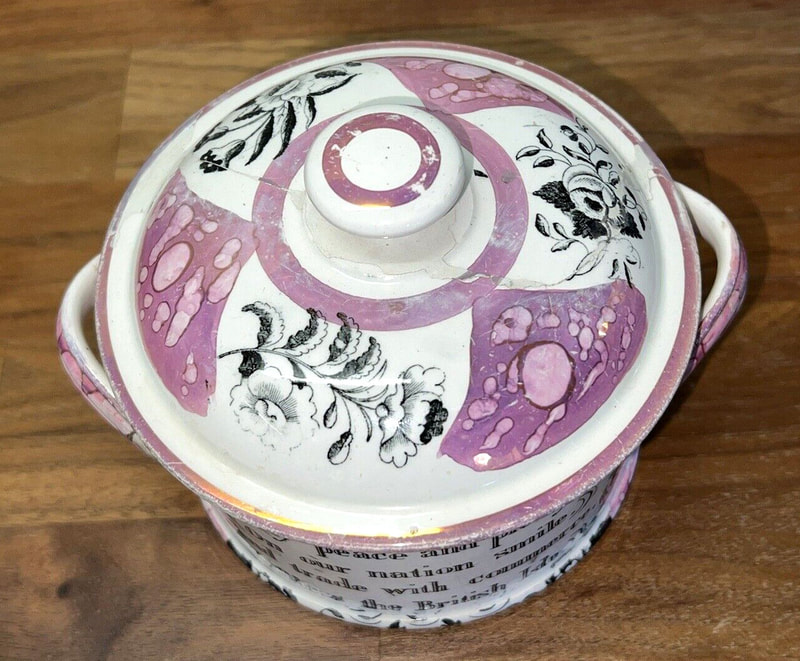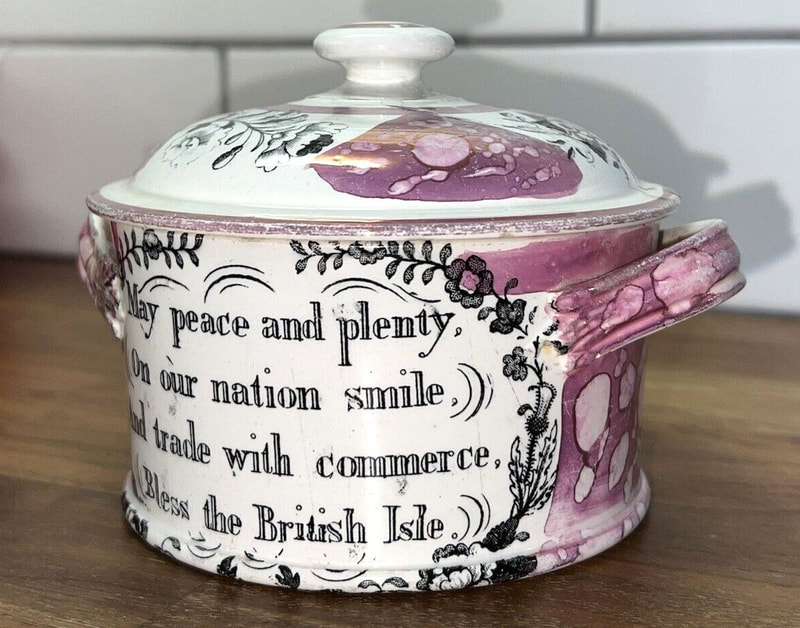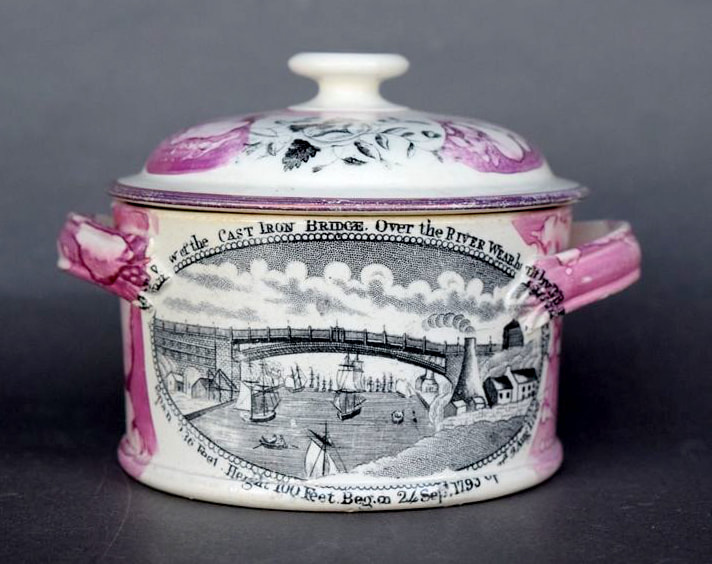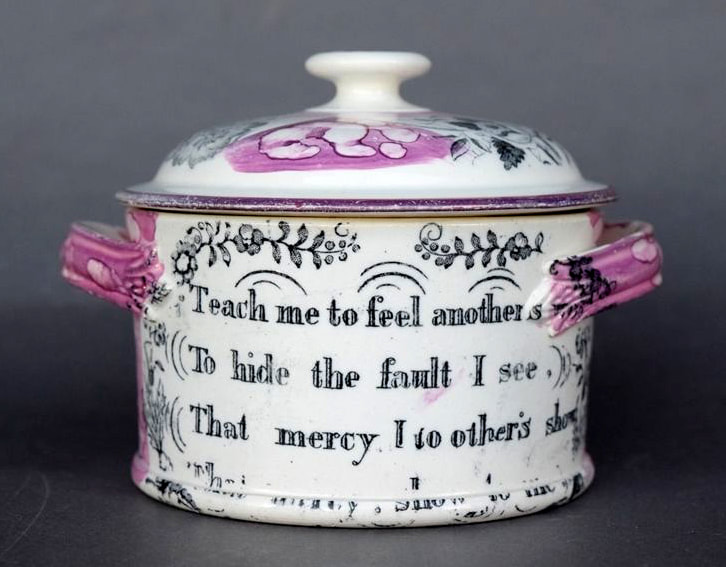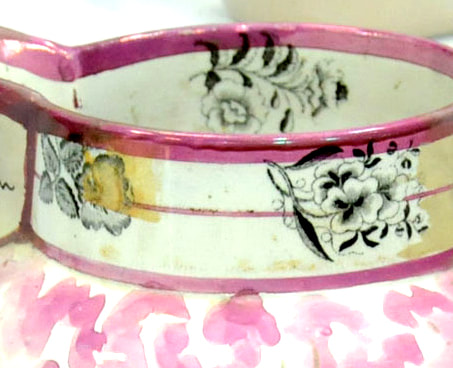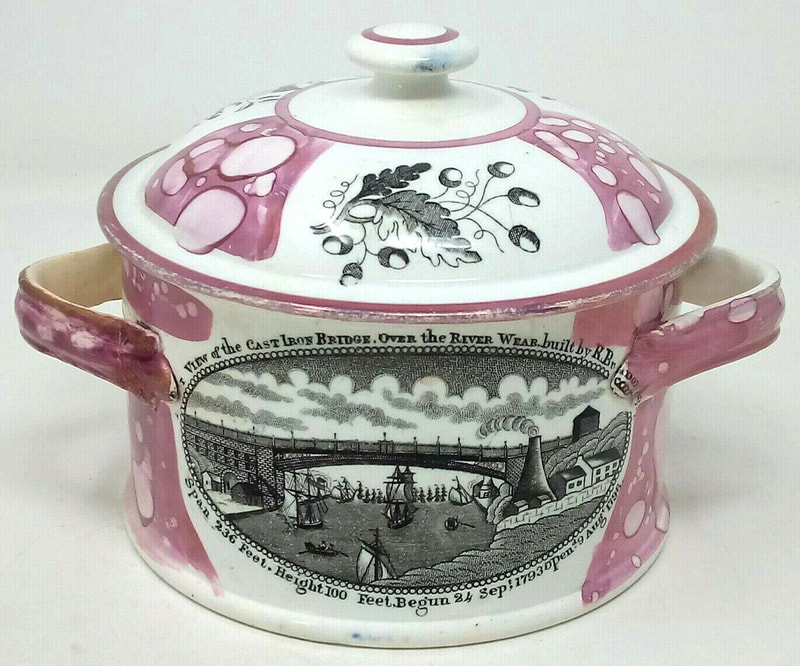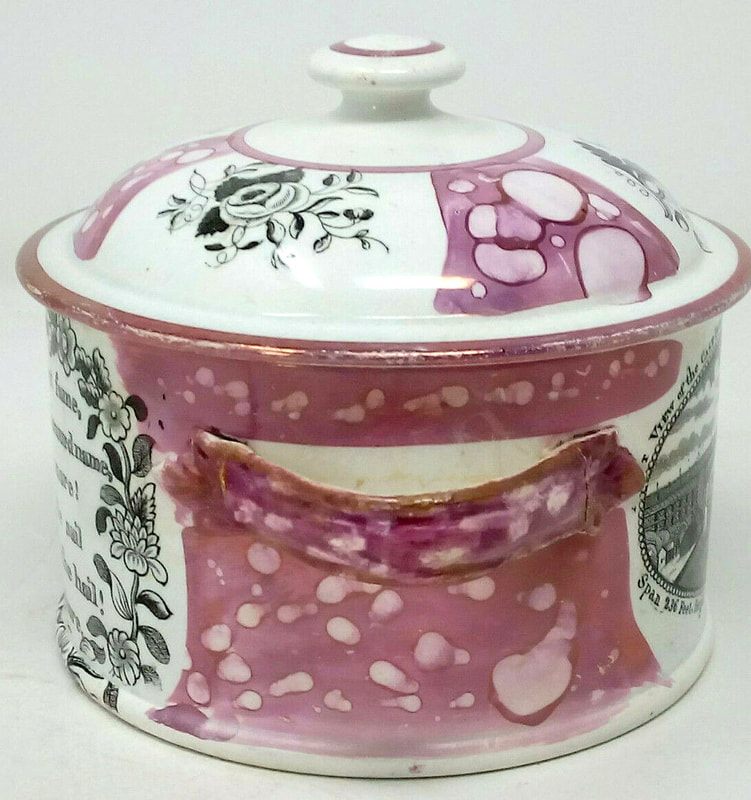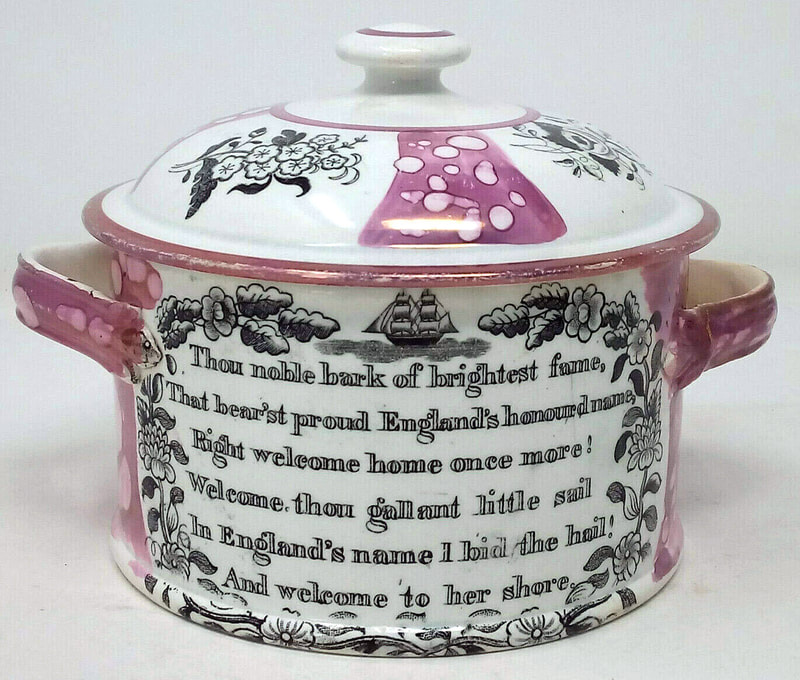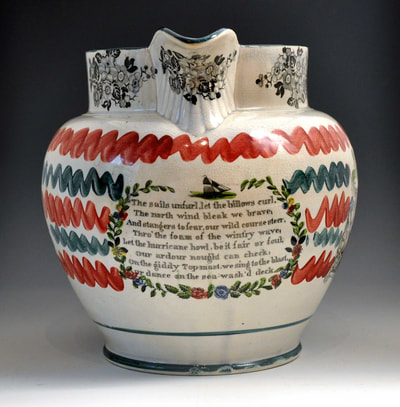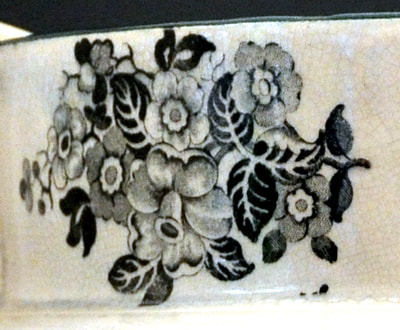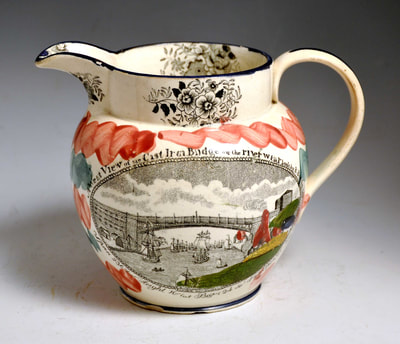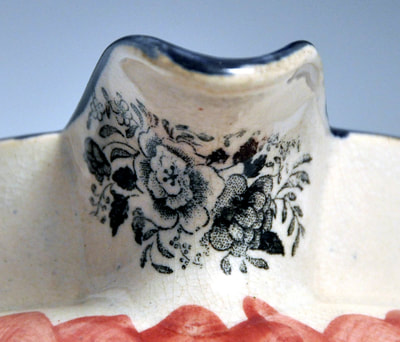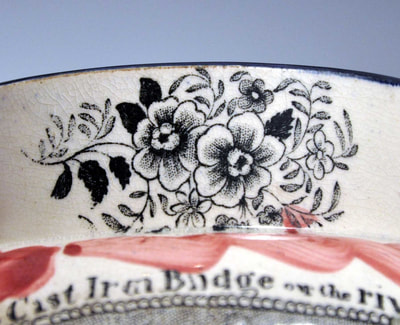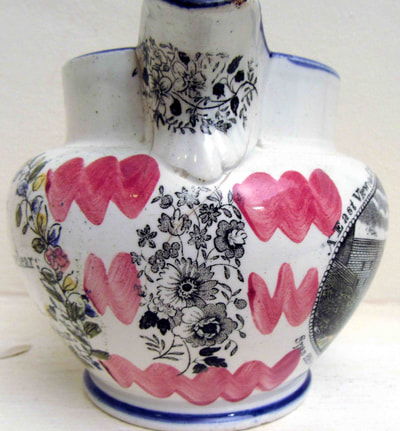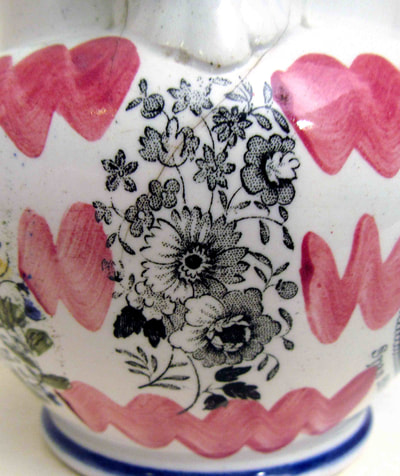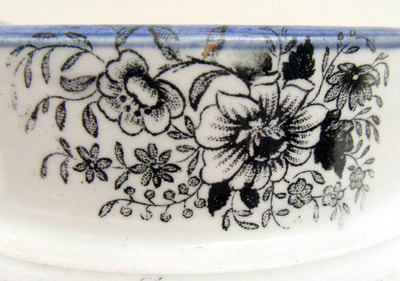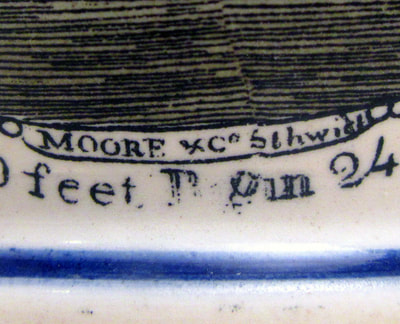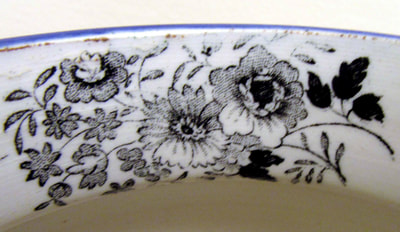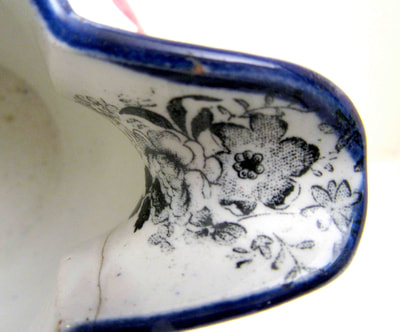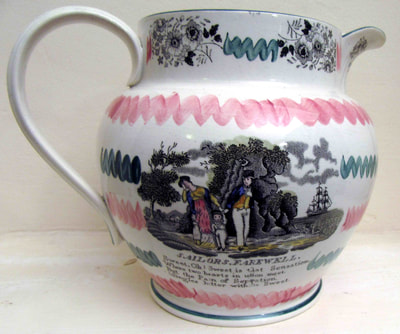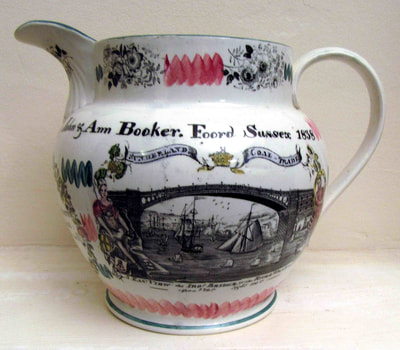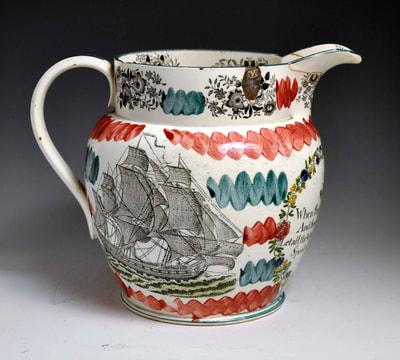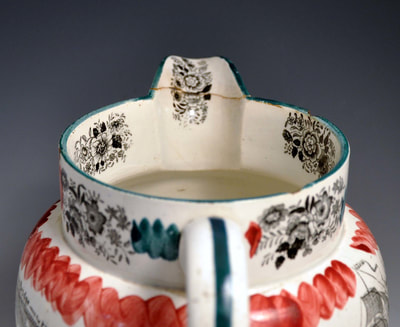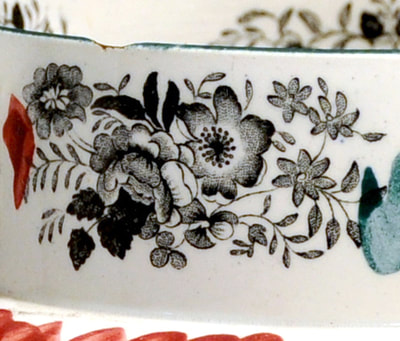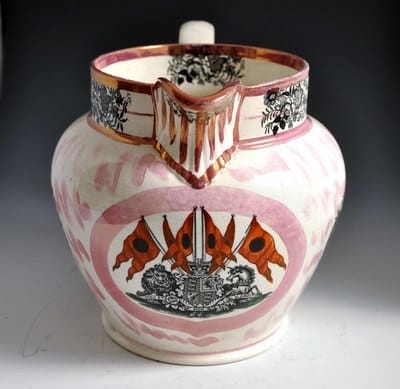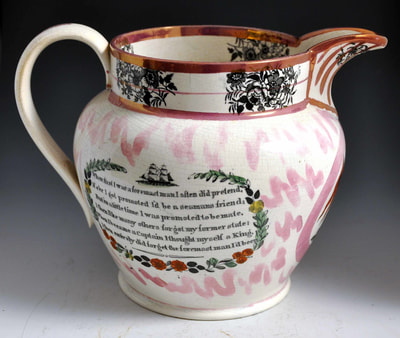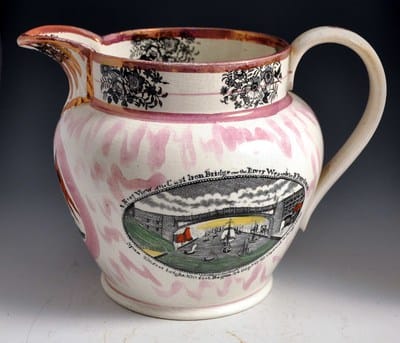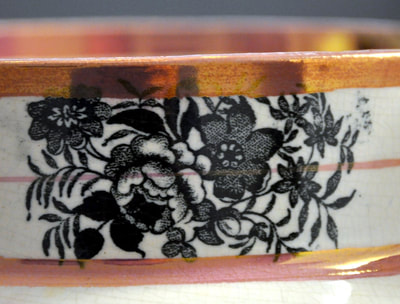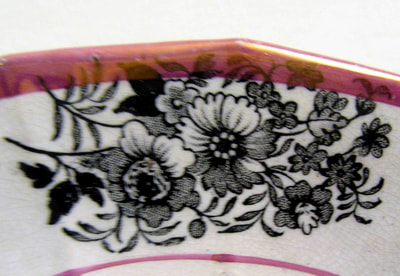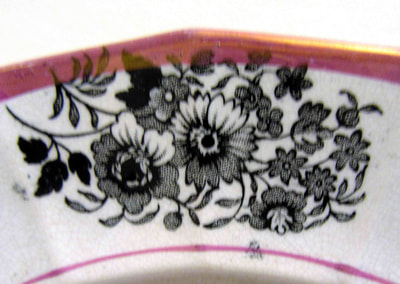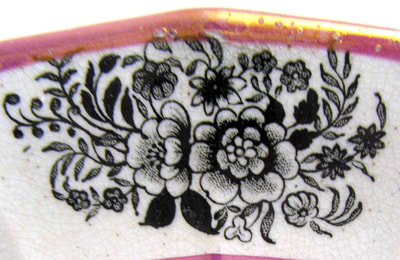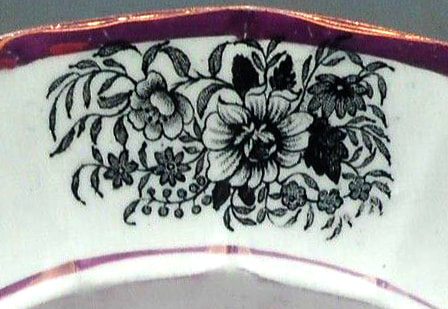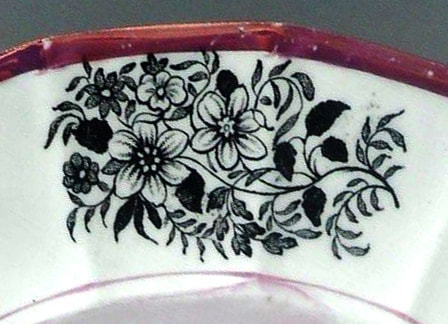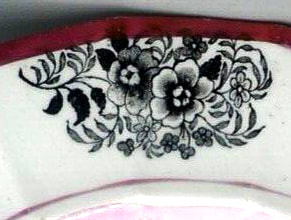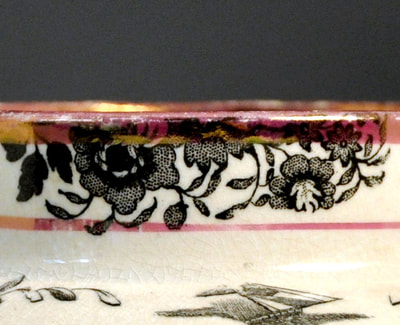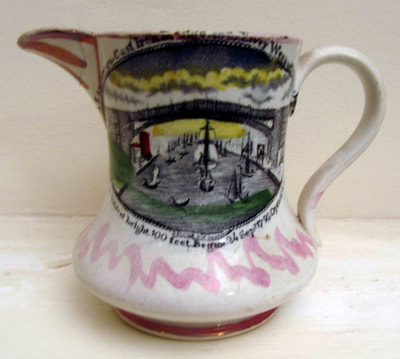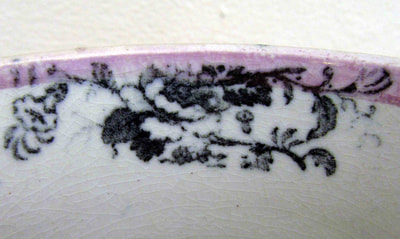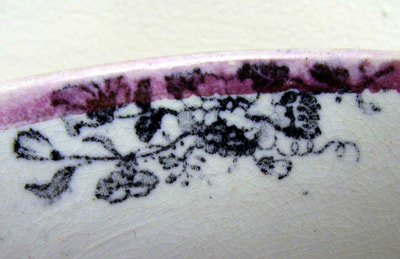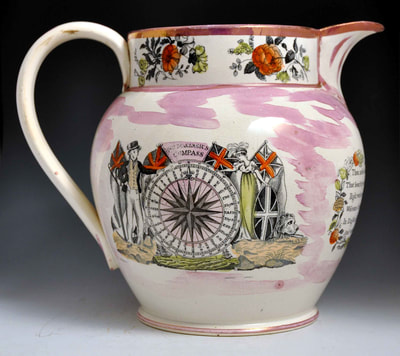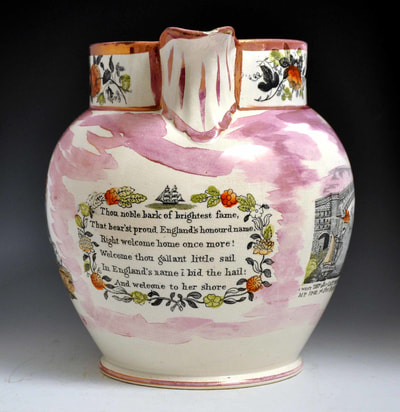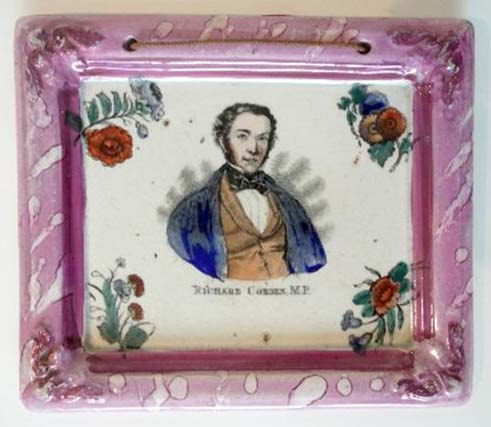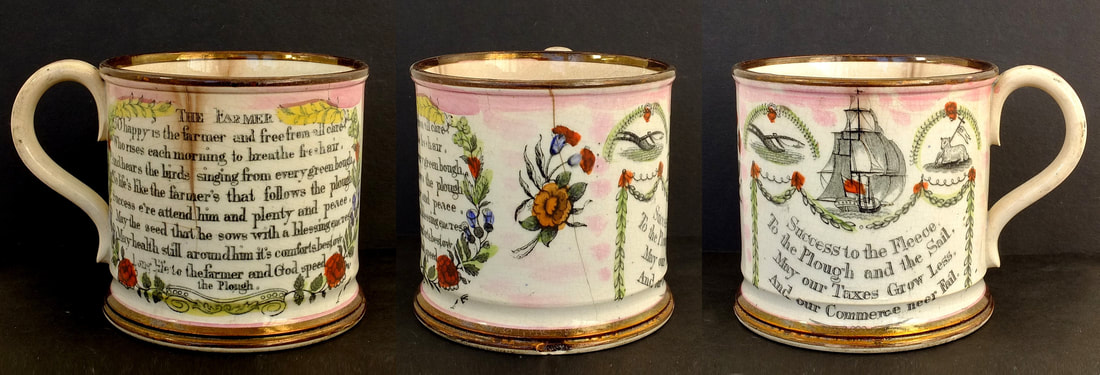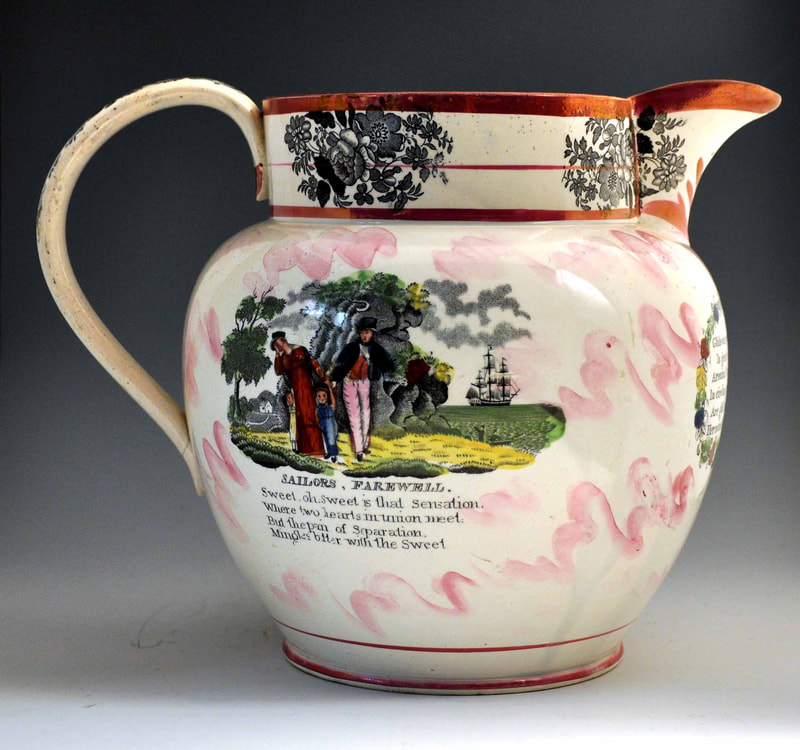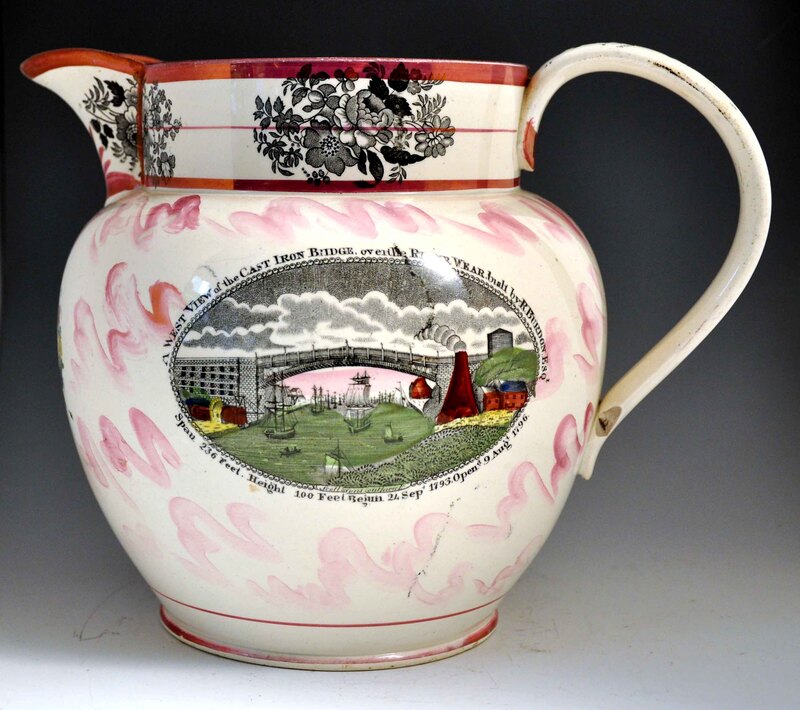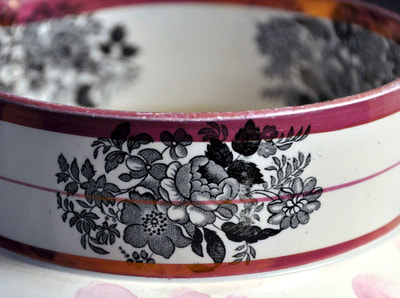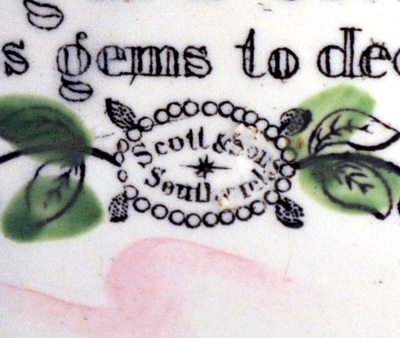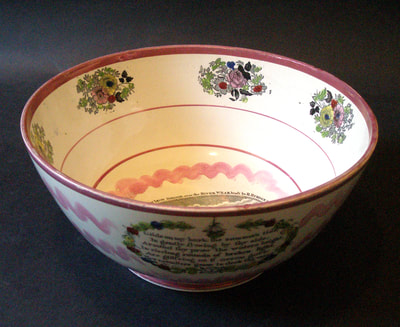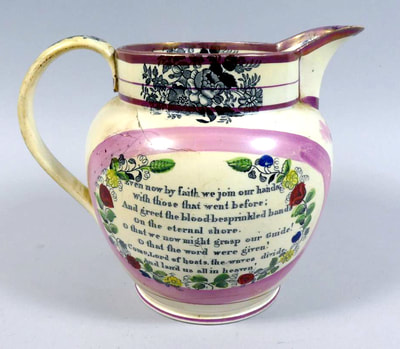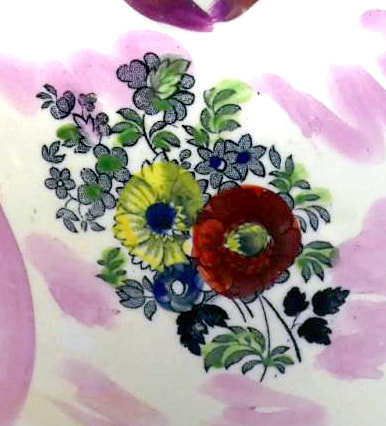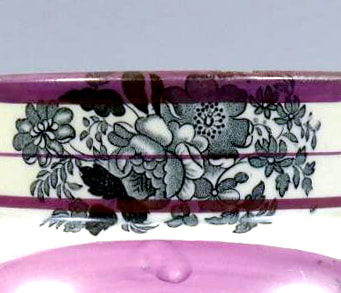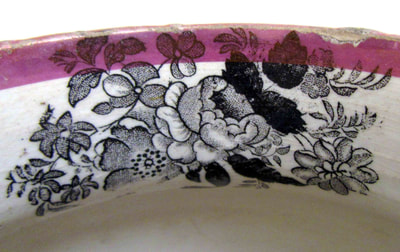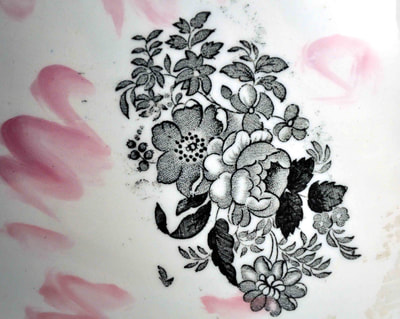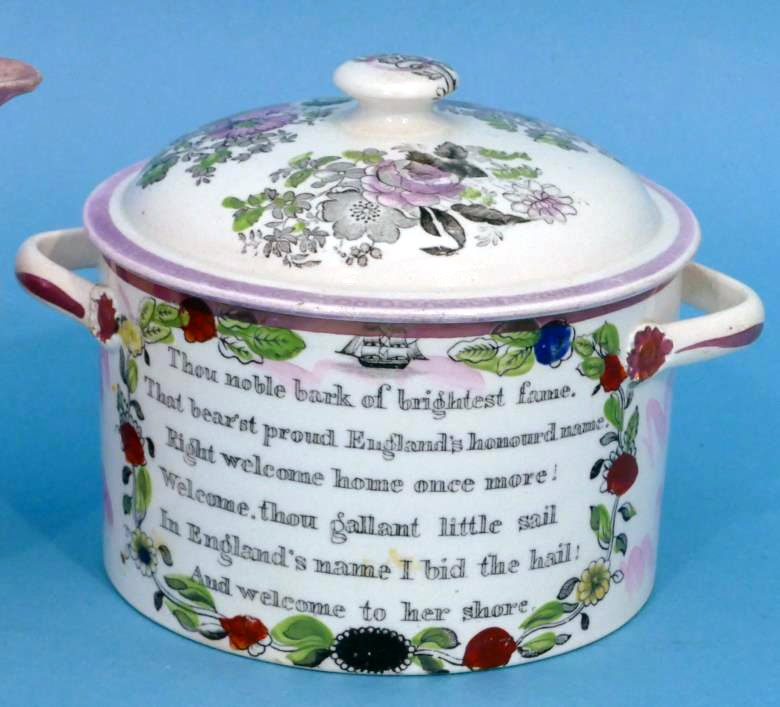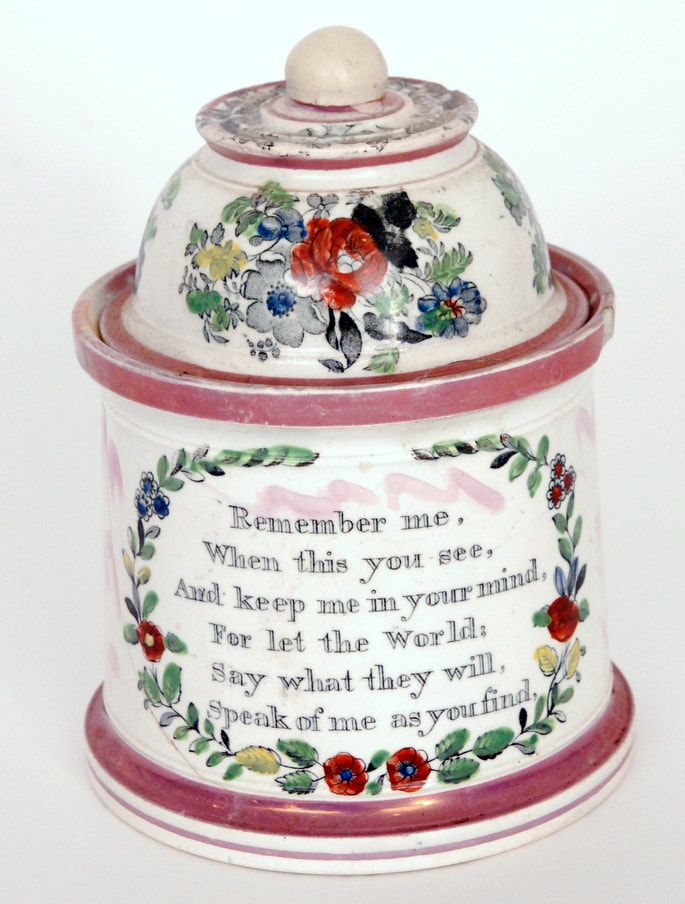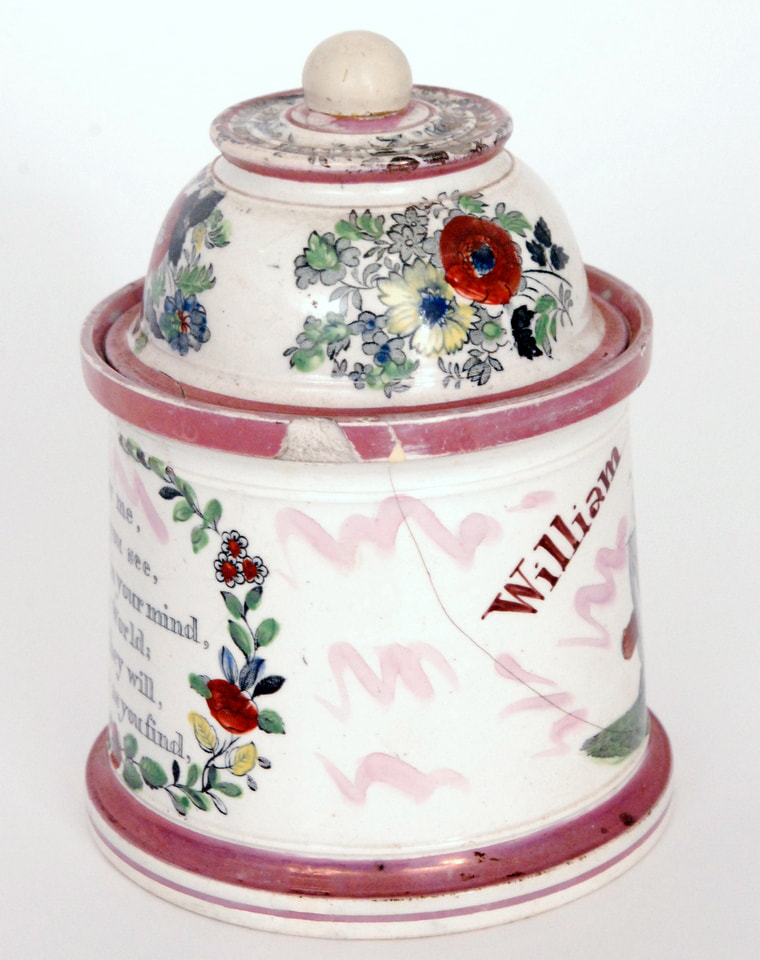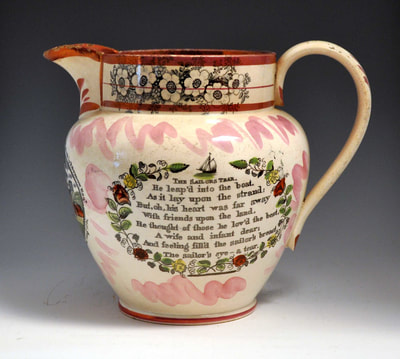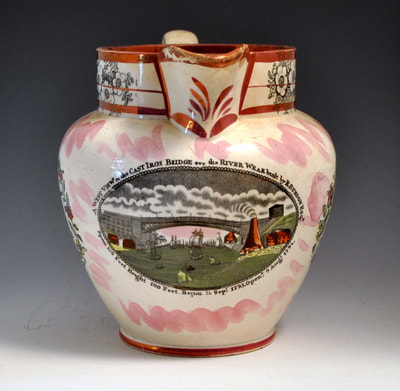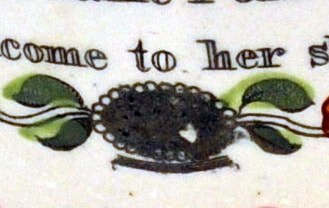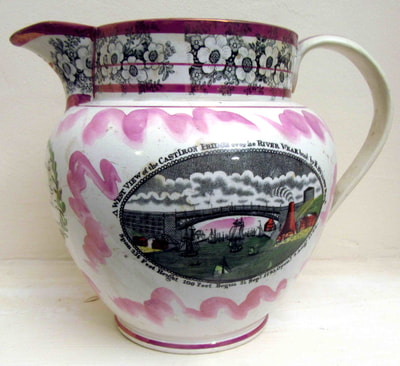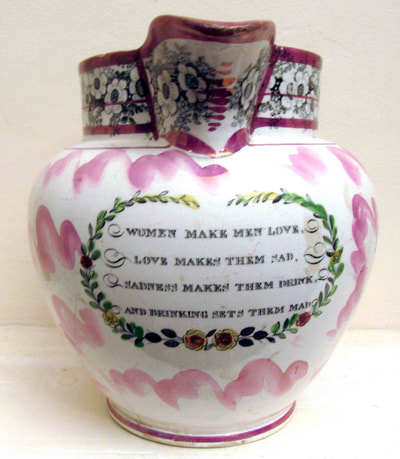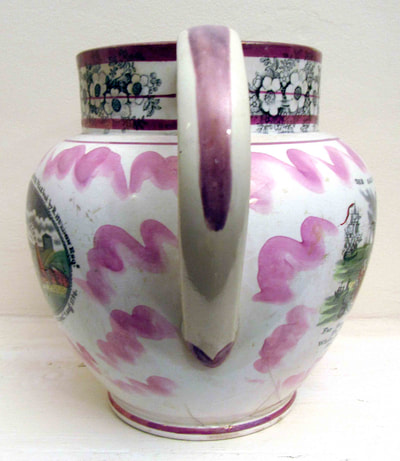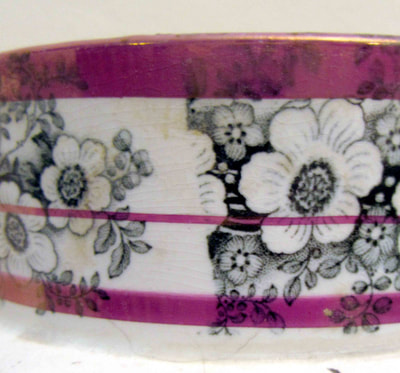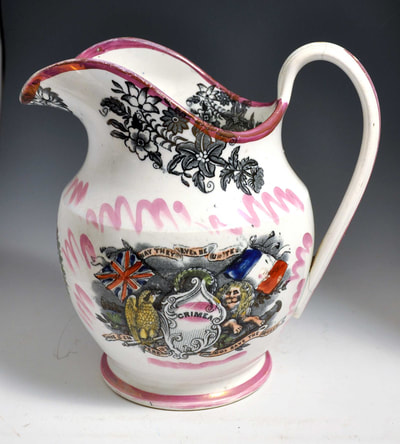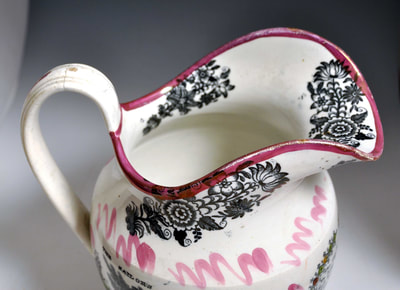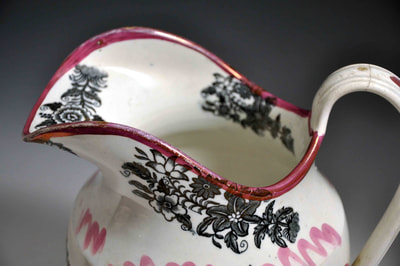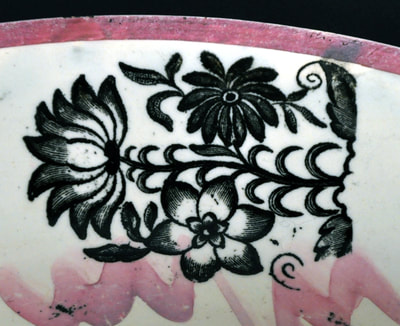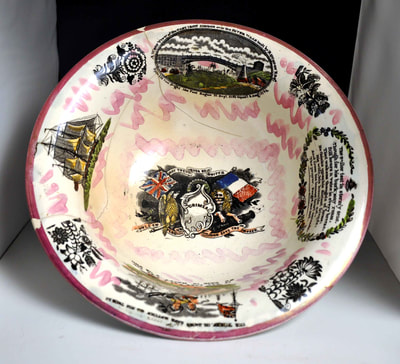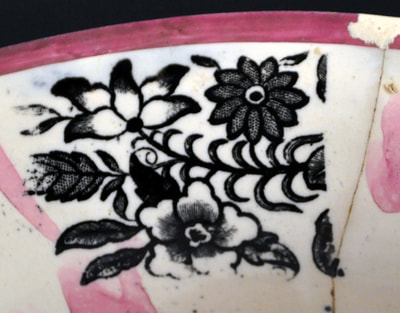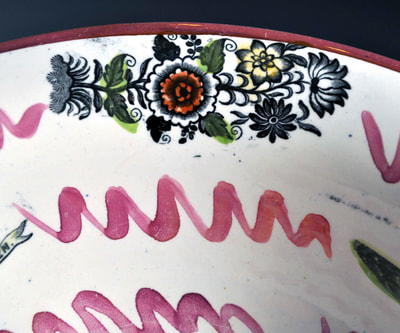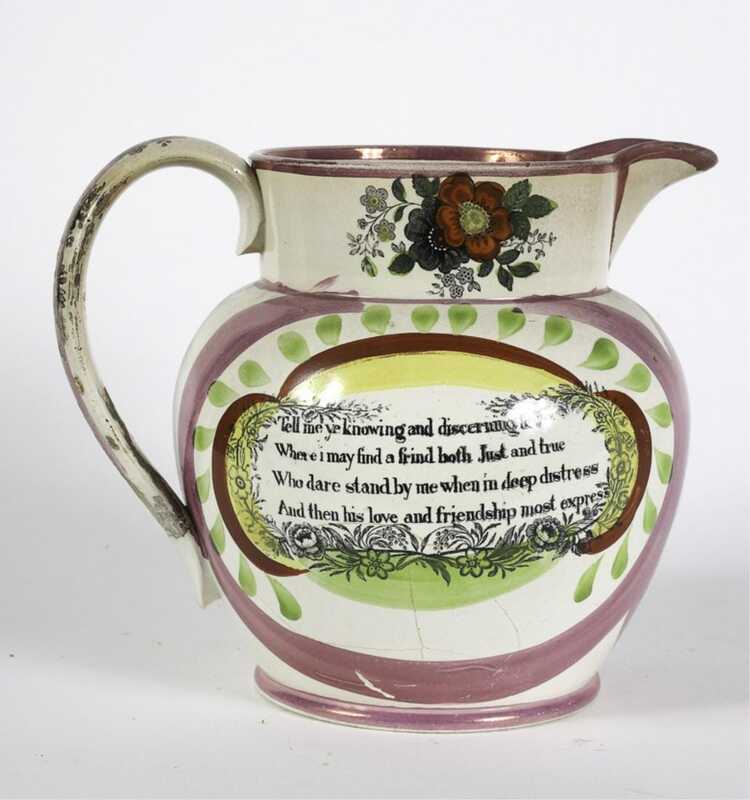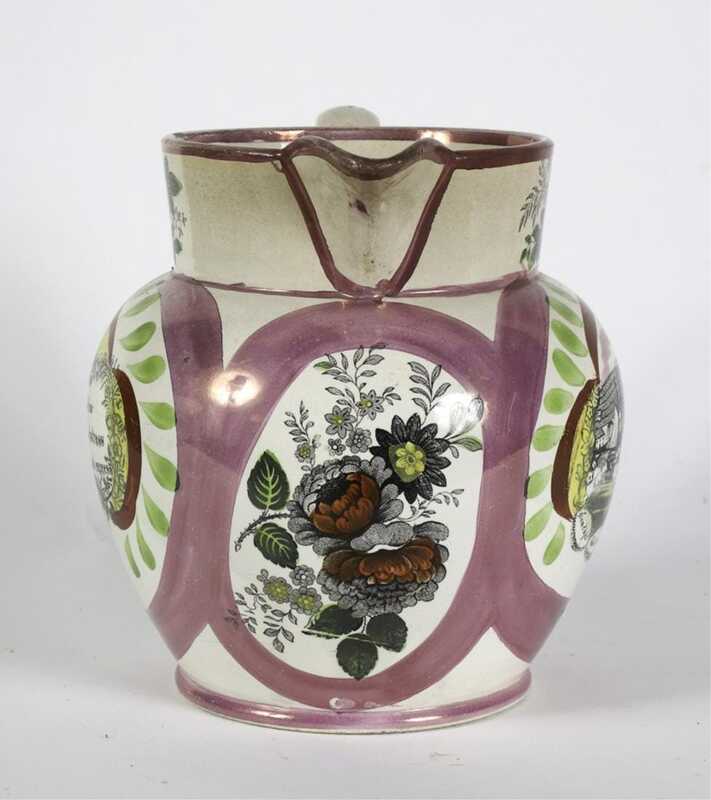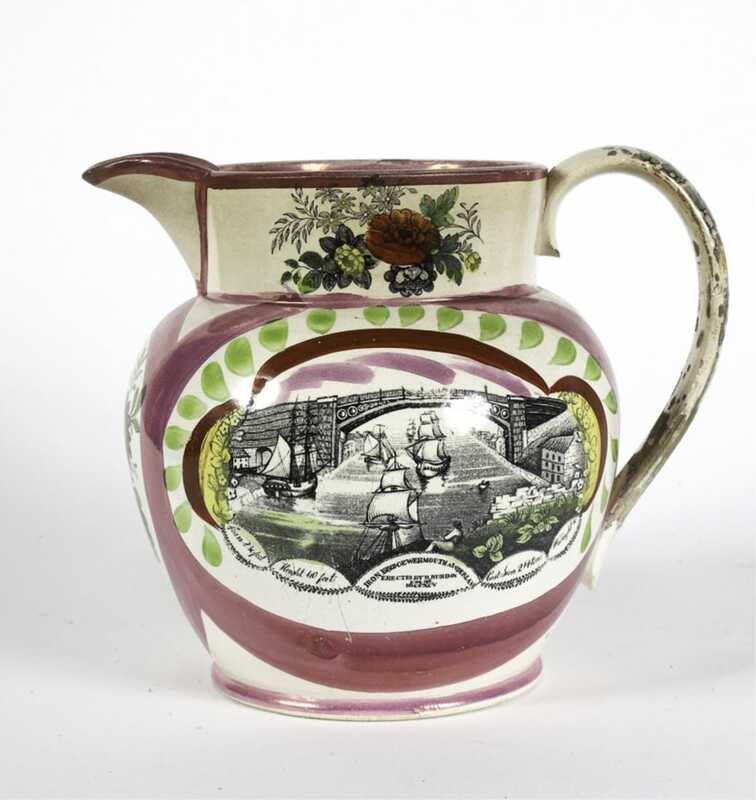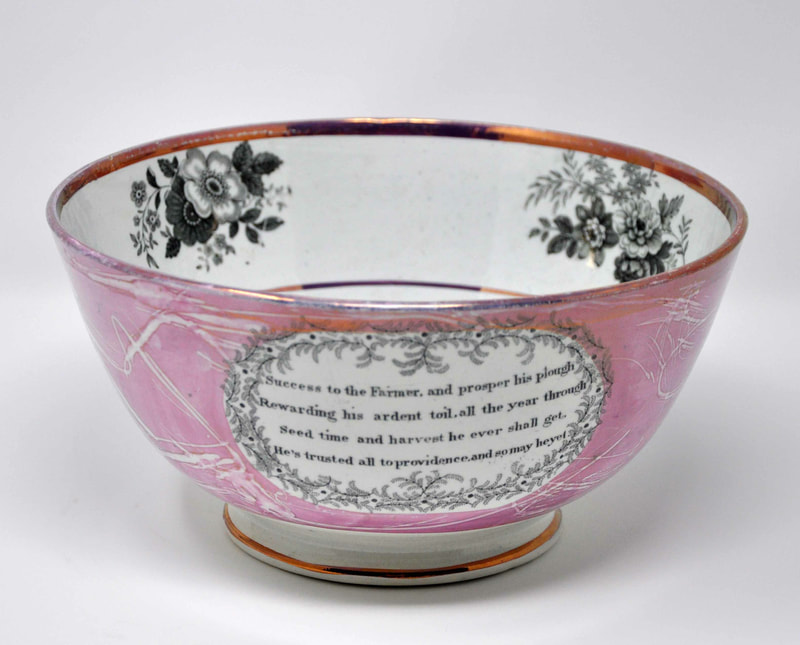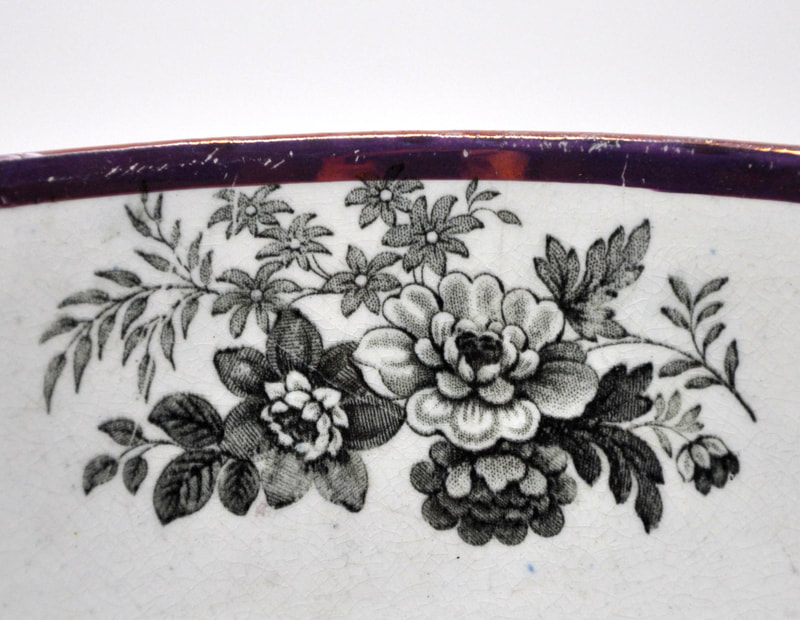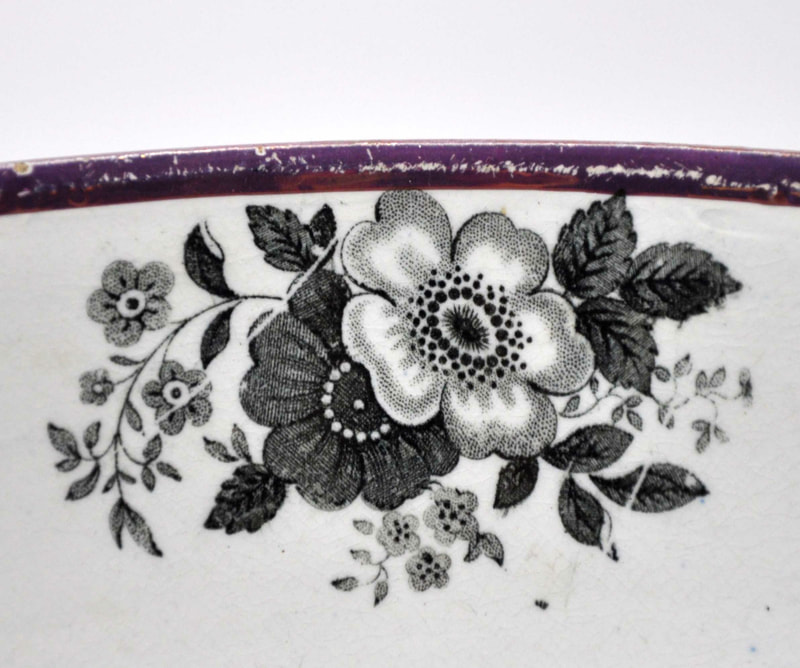Flower transfers – Sunderland
During the 1840s and beyond Sunderland potteries used floral transfers to decorate the collars of jugs and rims of bowls. Flower transfers from Tyneside potteries during this period are much rarer.
Garrison Pottery – 1
A small Dixon-attributed jug (the Noble Bark transfer appears on marked pieces) with a butterfly and flower design around the collar.
The same butterfly and flowers transfer, this time accompanied by a pheasant, on a larger jug with typical Dixon bridge and verse transfers.
Garrison Pottery – 2
Ian Sharp writes of this jug 'The floral transfers are from a sheet pattern called “Dresden“. This pattern has been seen on many marked pieces from Dixon & Co'.
Thanks to Norman Lowe for providing images of plates with variations of the Dresden pattern. None of the patterns matches the jug above, but it could be that these are earlier incarnations of the design. The first two are marked Dixon, Austin & Co, so were made before 1839 – at least 10 years before the jug above. The third plate has a 'Dresden' printed mark (marks are shown below their corresponding plates).
A large Dixon jug with a floral collar and 'Wellington and Peel Polka' transfer under the spout from the 1840s. This jug has snippets of the same flowers as the jug above (top two rows above from the Northumberland jug, bottom row above from the Polka jug).
Garrison Pottery – 3
Garrison Pottery – 4
Although the bridge transfers above and below are different, the eel pots do share a flower transfer (see top right of the lid above and right below). Dixon appear to have had a variety of such flower posies to mix and match on these items. The eel pot below has a posy of oak leaves and acorns.
Moore and Co, Wear Pottery – 1
A masonic jug, c1840, with what looks like a hawthorn blossom flower design.
Moore and Co, Wear Pottery – 2
There is a daffodil amongst the flowers that appear on the collar of this large Moore jug from the 1840s. The same posy is repeated around the collar but used both ways up.
Moore and Co, Wear Pottery – 3
Moore and Co, Wear Pottery – 4
Moore and Co, Wear Pottery – 5
The more familiar looking flowers on this jug, dated 1838, are almost identical to those used by Scott's pottery (see below). They are also a partial match for the jug above.
Another typically decorated Moore jug from the 1840s with the common flower transfers.
Moore and Co, Wear Pottery – 6
This Moore jug from c1850 has very similar appearance to the Scott jugs below. There appear to be at least 4 variations of transfer around the collar of this jug. Although the arrangement of the flowers is very similar to those above, they are heavier in appearance.
This plate, with a printed mark, has the four flower transfers above (or very similar; the first two inversed), and an additional two (see last two images).
Again, this plate, with an impressed mark, shares transfers with the items above. It is unclear how many variations of these posies there were on the copper plate.
These appear to be trimmed versions of 'Moore' flowers on a smaller jug.
Moore and Co, Wear Pottery – 7
Another jug with a Moore & Co Southwick printed mark, c1850, and a different set of flower transfers.
Newbottle High Pottery
The Newbottle attribution for this transfer is convoluted, and relates to pottery items donated by descendants of the owners to the Victoria and Albert Museum. Read more here.
Below, a different set of flowers with similar orange over-enamels to the jug above.
A mug with the bottom right flower sprig on the plaque above, and very similar enamelling.
An eel pot or butter dish with flowers on the lid.
A Scott and Sons, Southwick
Baker lists this partnership as running from 1829–1841. N.B. the printed mark (below right) is from the 'Glide on my bark' transfer under the spout of the jug.
A similar dated jug (1839) from near the end of the Scott & Sons partnership. This jug without printed marks.
A Scott & Sons bowl with multiple flower transfers, picked out with over enamels.
A similarly decorated, although unmarked, jug with flowers under the spout.
Scott Brothers and Co
This chamber pot below is attributed to the 1841–1872 partnership on the basis that the verse transfer has a blacked out makers mark. The original mark read S & Sons, Southwick, and was likely concealed when the pottery was rebranded as Scott Brothers and Co in 1841.
Scott Brothers and Co
An eel pot and a tobacco jar (restored finial) with hand enamelled versions of the flower transfers above. The eel pot has the obliterated Scott & Sons mark on the verse transfer.
Scott Brothers and Co
A jug also with the obliterated Scott & Sons mark. These flower transfers appear on jugs and bowls.
A similar jug with an obliterated Scott and Sons mark (under the bridge transfer). The flowers have been wrapped around the spout.
Scott Brothers and Co
This Crimean bowl, c1855 has the same flower transfers trimmed in half. The bowl is impressed 'SCOTT'.
Another Scott-impressed bowl with the same flowers, this time decorated with over enamels.
Flower transfers – Tyneside
Robert Maling, Ouseburn Bridge Pottery, Newcastle
Below is a jug with an unusual combination of a flower collar, and the green-fleck decoration associated with Maling in the 1830s.
See the 'Life's a ship...' page for more details about the Robert Maling attribution of the bowl below. The bowl is finely potted and was likely made in the 1840s.
